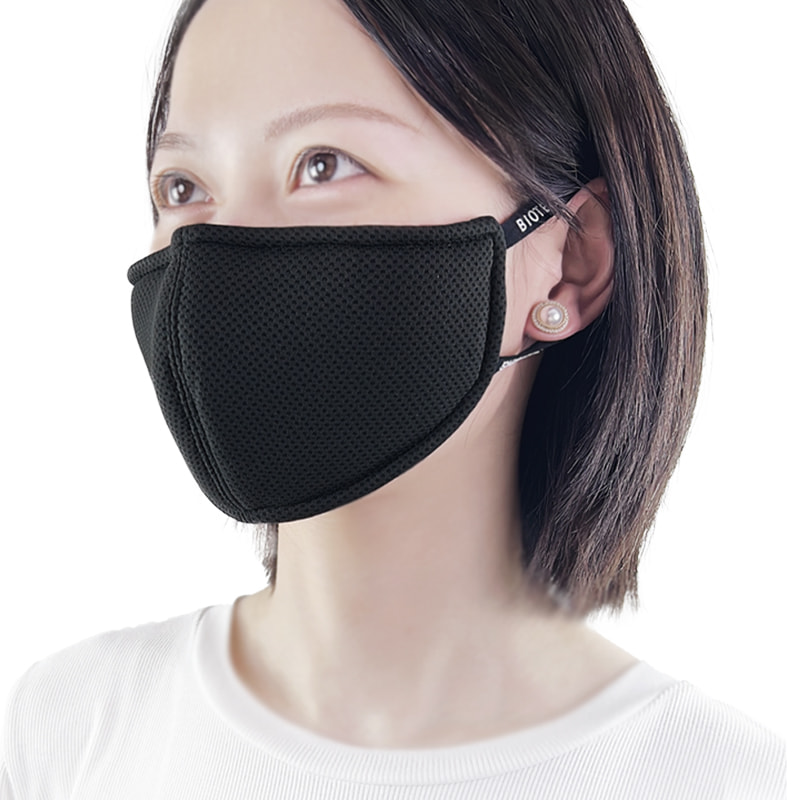In the age of global health challenges and heightened awareness of airborne diseases, the role of masks has come to the forefront of public health discourse. While the aesthetics and comfort of masks are often discussed, their filtration efficiency is paramount. This article delves into the critical importance of filtration efficiency in functional masks, exploring how it determines mask effectiveness and impacts public health.
Understanding Filtration Efficiency
Filtration efficiency refers to the mask's ability to filter out airborne particles, including viruses, bacteria, and pollutants. It is typically expressed as a percentage, representing the proportion of particles the mask can effectively capture and prevent from being inhaled by the wearer.
For example, a mask with a filtration efficiency of 95% can filter out 95% of airborne particles. High filtration efficiency is crucial for ensuring that masks provide adequate protection against harmful particles and pathogens.
The Science Behind Filtration
The efficiency of a mask’s filtration system depends on several factors:
Material Quality: The type and quality of materials used in a mask are pivotal. High-efficiency materials like melt-blown polypropylene have fine fibers that trap particles effectively.
Layering: Masks with multiple layers increase the chances of trapping particles. Each layer serves as a barrier, capturing particles of different sizes through mechanisms like inertial impaction, diffusion, and electrostatic attraction.
Fit and Seal: A well-fitted mask with a proper seal prevents air leakage, ensuring that all inhaled and exhaled air passes through the filter material. Poorly fitted masks can reduce filtration efficiency significantly.
Electrostatic Charge: Some functional mask materials are electrostatically charged to attract and trap particles. This is a key feature in many high-efficiency masks, such as N95 respirators.
Why Filtration Efficiency Matters
Protection Against Pathogens: High filtration efficiency is crucial for masks designed to protect against infectious agents like the COVID-19 virus. Masks with lower efficiency might allow virus-laden droplets to pass through, increasing the risk of transmission.
Pollution Mitigation: In regions with high levels of air pollution, masks with good filtration efficiency can protect individuals from inhaling harmful pollutants, such as PM2.5 and other particulate matter. This is vital for preventing respiratory and cardiovascular diseases.

Occupational Safety: For workers exposed to dust, chemicals, or other hazardous substances, masks with high filtration efficiency are essential for safeguarding health. Proper filtration can prevent long-term exposure to harmful particles that can cause chronic illnesses.
Preventing Cross-Contamination: In medical settings, masks with high filtration efficiency are critical for preventing the spread of infections from healthcare providers to patients and vice versa. This is particularly important in surgeries and other sterile environments.
Measuring Filtration Efficiency
Filtration efficiency is typically assessed through standardized tests that measure the mask’s ability to filter particles of various sizes. Key tests include:
Particulate Filtration Efficiency (PFE): Measures the percentage of particles (usually 0.1-0.3 microns in size) that the mask can filter out. This is critical for assessing a mask’s effectiveness against viruses and fine particulate matter.
Bacterial Filtration Efficiency (BFE): Measures the mask's ability to filter out bacteria-sized particles. High BFE indicates good protection against bacterial pathogens.
Viral Filtration Efficiency (VFE): Similar to BFE but specifically measures the mask’s ability to filter out virus-sized particles.
Fit Testing: Assesses the mask's ability to provide a secure fit and seal, ensuring that no unfiltered air bypasses the mask’s filter material.
Choosing the Right Mask
When selecting a mask, it’s essential to consider its filtration efficiency in the context of its intended use. Here are some guidelines:
For General Use: Masks with a filtration efficiency of 70-90% are suitable for general use, such as in public spaces where social distancing is practiced.
For Medical Use: Masks with higher filtration efficiency, such as surgical masks and N95 respirators, are recommended for healthcare settings where the risk of exposure to pathogens is higher.
For Pollution Protection: Masks designed to filter out fine particulate matter (PM2.5) are essential in areas with significant air pollution.
For Occupational Safety: Depending on the type of exposure, masks with specific filtration capabilities (e.g., chemical filters) may be required to protect workers.
The importance of filtration efficiency in functional masks cannot be overstated. As we navigate ongoing and future health challenges, understanding and prioritizing high-efficiency filtration in masks will be essential for protecting public health, reducing disease transmission, and mitigating the effects of air pollution. When selecting a mask, always consider its filtration efficiency to ensure you are receiving the level of protection you need.











